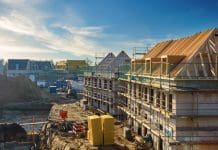The latest report from the Zero Carbon Hub on the energy Performance Gap project, highlights some concerns in addition to specifying areas for further examination. Planning and Building Control Today provide a brief overview of the project so far.
In the April edition of Planning and Building Control Today, Rob Pannell, MD of the Zero Carbon Hub presented the initial findings 1 of the industry wide project exploring the potential causes to the energy Performance Gap, and proposals to close it.
Fast forward to July and the Zero Carbon Hub released their interim report: ‘Closing the gap between design and as-built performance’ that expanded on those initial findings.
The latest report highlights that a gap in a building’s performance would mean that new housing cannot be relied upon to play as expected, vital for the government’s national carbon reduction plan. For owners it means that energy bills may be higher than expected, undermining their confidence in new (low carbon homes). For planners, designers, manufacturers and house builders the fall-out from underperforming new homes could impact on their reputation and business.
Both government and a wide spectrum of interest groups have been galvanised by these reasons, seeing it as a high priority. To conclude this latest report, over 140 professionals across 90 companies have come together to explore the causes of the performance gap, and to work towards developing cost-effective and realistic proposals that will help to close it. Those professionals have been involved as the project’s Industry Executive Committee, Steering Group and Work Groups.
The guiding principle of the project is described thus: “Develop ideas collaboratively with all relevant parties to ensure support from industry and government throughout the initial funding period and beyond to 2020.”
The project’s scope looks at the complete house building process, from conception through to completion on site. After thorough examinations of the areas that make up this process, conclusions have been made on what the next steps should be.
Next steps
The project has highlighted the sheer number of various issues which are perceived to have the potential to impact the performance gap. The next stages of the project will enable these to be prioritised via the evidence gathering and analysis process. This may also reveal aspects that are not as relevant an initially perceived.
The group has faced difficulties in gathering evidence for some of the issues involved, so the plan is to extend the evidence gathering phase in order to avoid making premature assumptions on the impact and prioritisation of the issues identified. There was always an acknowledgement that the project couldn’t possibly solve all the issues raised and the evidence gathering and development of solutions will need to carry on. ■
Planning and Building Control Today would urge all readers to read the full report available here http://www.zerocarbonhub.org/sites/default/files/resources/reports/Closing_the_Gap_Bewteen_Design_and_As-Built_Performance_Interim_Report.pdf
1 http://www.adjacentgovernment.co.uk/pbc-edition-003/closing-theperformance-gap/
. . . . . . . . . . . . . . . . . . . . . . . . . . . . . . . . . . . . . . . . . . . . . . .
Adjacent Planning and Building Control Today
editorial@adjacentgovernmnet.co.uk
www.adjacentgovernment.co.uk
www.twitter.com/PBC_Today













